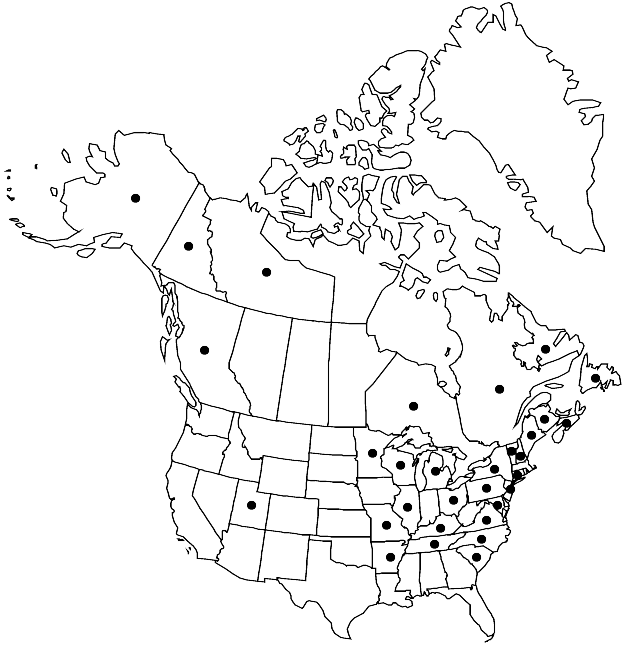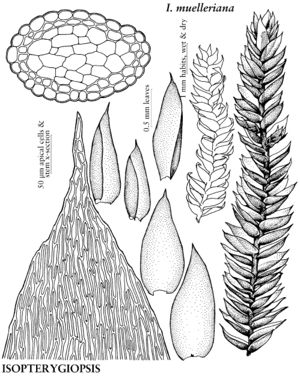Difference between revisions of "Isopterygiopsis muelleriana"
J. Hattori Bot. Lab. 33: 379. 1970.
FNA>Volume Importer |
FNA>Volume Importer |
(No difference)
| |
Revision as of 19:47, 24 September 2019
Plants in thin mats, yellowish. Stems 2 cm, 0.8–2 mm wide, complanate-foliate; epidermal cells large, walls thin, cortical cells in 1–several layers, small, walls thick. Leaves somewhat rigid, erect-spreading, crowded, imbricate, ovate- to oblong-lanceolate, weakly concave, 0.5–1.5 × 0.3–0.5 mm; margins plane, entire or minutely serrulate; apex acuminate, often abruptly so; alar cells not differentiated or sometimes short-rectangular, 8–24 × 4–7 µm; medial laminal cells 55–94 × 3–6 µm. Specialized asexual reproduction sometimes present as propagula, 66–96 × 6–12 µm, of 2–6 cells. Sexual condition dioicous. Seta brown to reddish, 0.6–1.2 cm. Capsule erect or rarely ± cernuous, yellowish to orange-brown, ellipsoid to ovoid, straight, 0.5–1.5 mm; operculum conic to obliquely rostrate, 0.4–0.8 mm. Spores 8–12 µm.
Phenology: Capsules mature fall (Sep).
Habitat: Acidic cliffs, rock outcrops, boulders in woods
Elevation: moderate elevations (300-1200 m)
Distribution

B.C., N.B., Nfld. and Labr., N.W.T., N.S., Ont., Que., Yukon, Alaska, Ark., Conn., Ill., Ky., Maine, Md., Mich., Minn., Mo., N.H., N.J., N.Y., N.C., Ohio, Pa., S.C., Tenn., Utah, Vt., Va., Wis., Mexico (Distrito Federal), Europe, Asia.
Discussion
Isopterygiopsis muelleriana is easily distinguished from the other two species in the genus by stems that are complanate-foliate, pectinate, appearing concave on the adaxial surface because of the upturned leaves, and by epidermal stem cells that are very large and thin-walled. Inclusion here of the Utah record is based on S. Flowers (1973).
Selected References
None.
